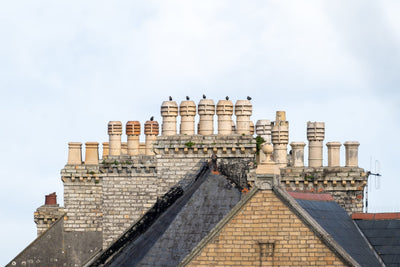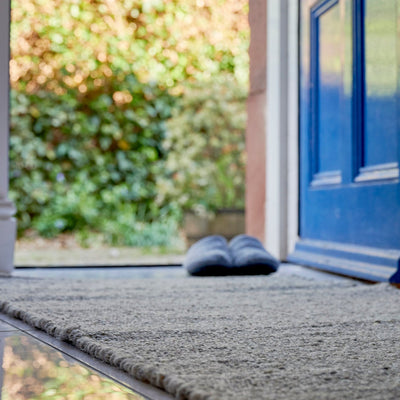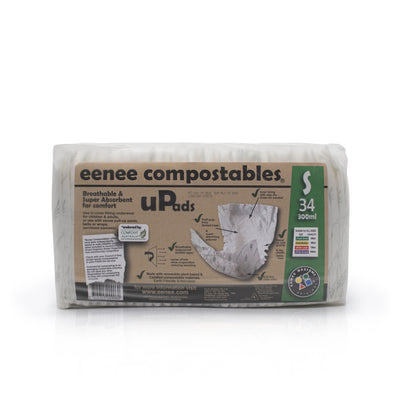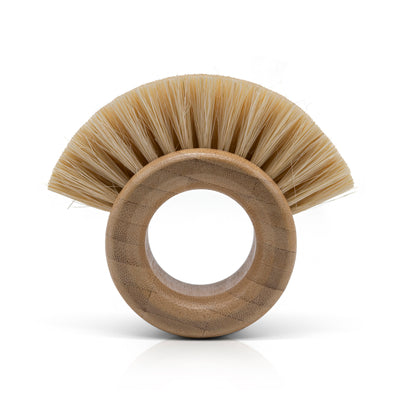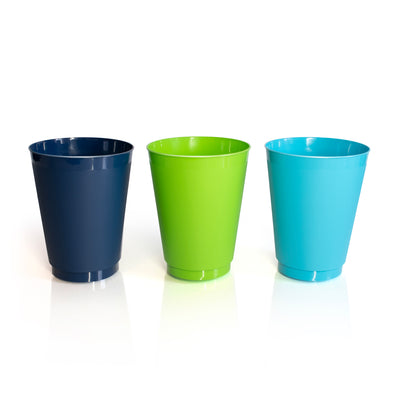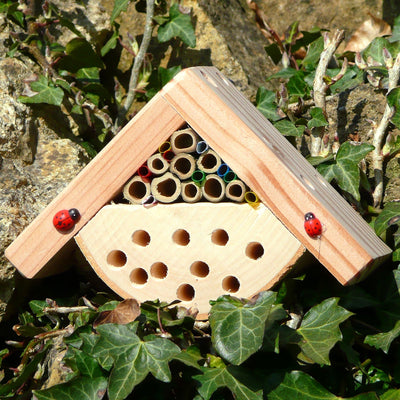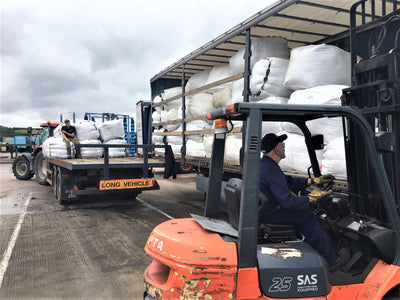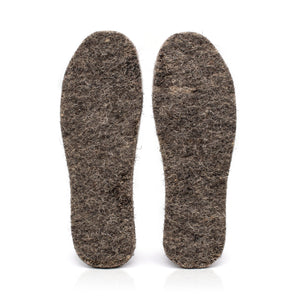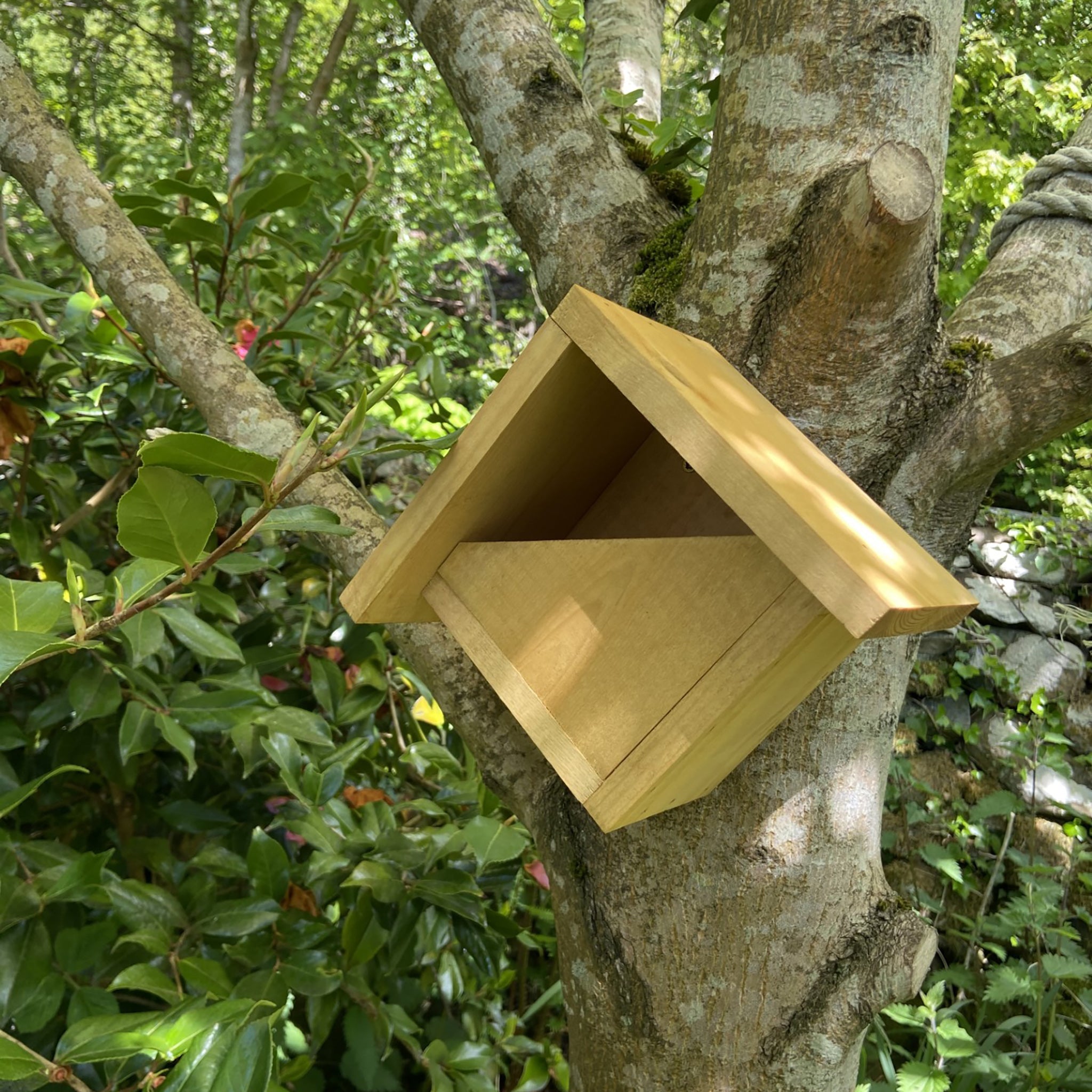Where should the open fronted nest box be located?
These birds normally select low-down nesting areas so try to erect this open fronted nest box between 30cm and 1m from the ground.
Blackbirds and robins, in particular, may seem like quite tame garden birds but when it comes to raising their young they want somewhere that’s discreet. It’s tempting to put a birdbox somewhere where it can easily be observed, but this means it’s less likely to be used by the birds. It will need to somewhere where there is lots of sheltered undergrowth. Think of places where there is dense ivy or tucked into thick shrubs.
Low-nesting birds are particularly vulnerable to predators, especially cats so try to locate the box somewhere that’s safe from predators in a private spot.
Why is it important to provide bird boxes for birds that nest low to the ground?
Robins and blackbirds seem like the commonest of garden species, yet all of our wild birds need help because even the most common of bird species are declining in numbers in the UK.
It’s all well and good providing food (which of course is very important) but one of their other greatest threats is loss of habitat, and with that loss of suitable breeding sites due to decreased woodland and hedgerow areas.
You can make all the difference to your local bird population by putting up a range of nest boxes, like our Classic Nest Box. We’ve put a good variety in our fields as part of our Buy Land Plant Trees project and they have been very popular with our local birds.
How can I attract these birds to use the open fronted nest box?
Quite simply – food and nesting materials!
Robins, blackbirds and wrens like to eat suet and mealworms. Fat balls are made of suet and they love them! Most birds that like nesting close to the ground are ground feeders so you can crumble fat balls on to our ground feeder to let them feed safely.
You can put out some nesting materials like our bird nest wool in the spring which they can use to line their nests to make them snug and warm.
Where should the open fronted nest box be located?
These birds normally select low-down nesting areas so try to erect this open fronted nest box between 30cm and 1m from the ground.
Blackbirds and robins, in particular, may seem like quite tame garden birds but when it comes to raising their young they want somewhere that’s discreet. It’s tempting to put a birdbox somewhere where it can easily be observed, but this means it’s less likely to be used by the birds. It will need to somewhere where there is lots of sheltered undergrowth. Think of places where there is dense ivy or tucked into thick shrubs.
Low-nesting birds are particularly vulnerable to predators, especially cats so try to locate the box somewhere that’s safe from predators in a private spot.
Why is it important to provide bird boxes for birds that nest low to the ground?
Robins and blackbirds seem like the commonest of garden species, yet all of our wild birds need help because even the most common of bird species are declining in numbers in the UK.
It’s all well and good providing food (which of course is very important) but one of their other greatest threats is loss of habitat, and with that loss of suitable breeding sites due to decreased woodland and hedgerow areas.
You can make all the difference to your local bird population by putting up a range of nest boxes, like our Classic Nest Box. We’ve put a good variety in our fields as part of our Buy Land Plant Trees project and they have been very popular with our local birds.
How can I attract these birds to use the open fronted nest box?
Quite simply – food and nesting materials!
Robins, blackbirds and wrens like to eat suet and mealworms. Fat balls are made of suet and they love them! Most birds that like nesting close to the ground are ground feeders so you can crumble fat balls on to our ground feeder to let them feed safely.
You can put out some nesting materials like our bird nest wool in the spring which they can use to line their nests to make them snug and warm.








